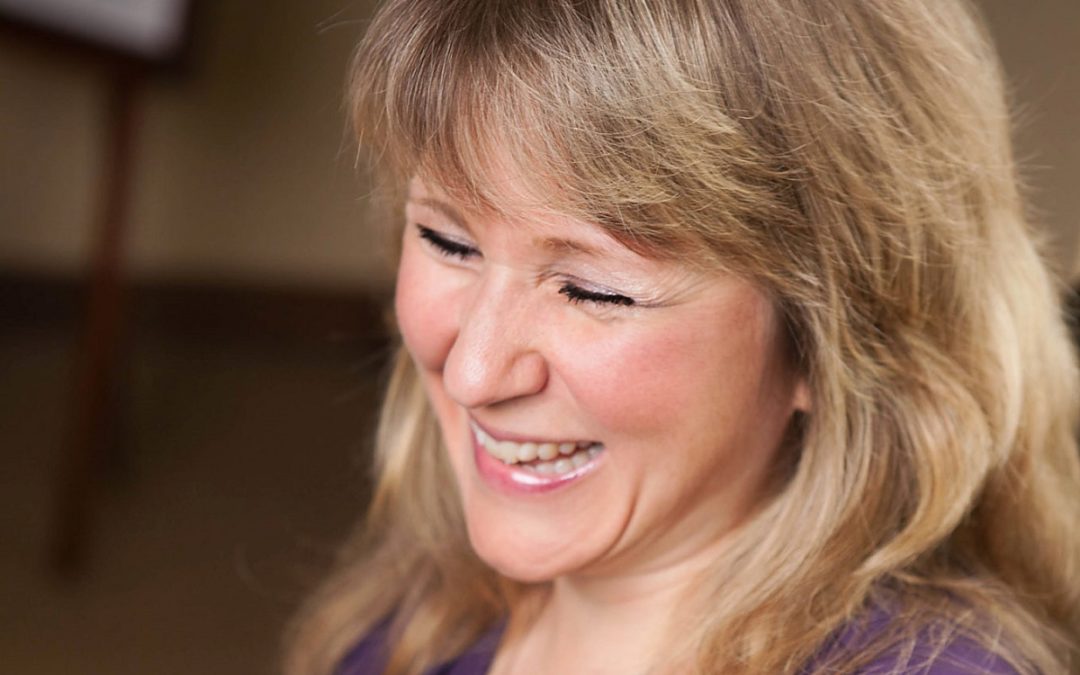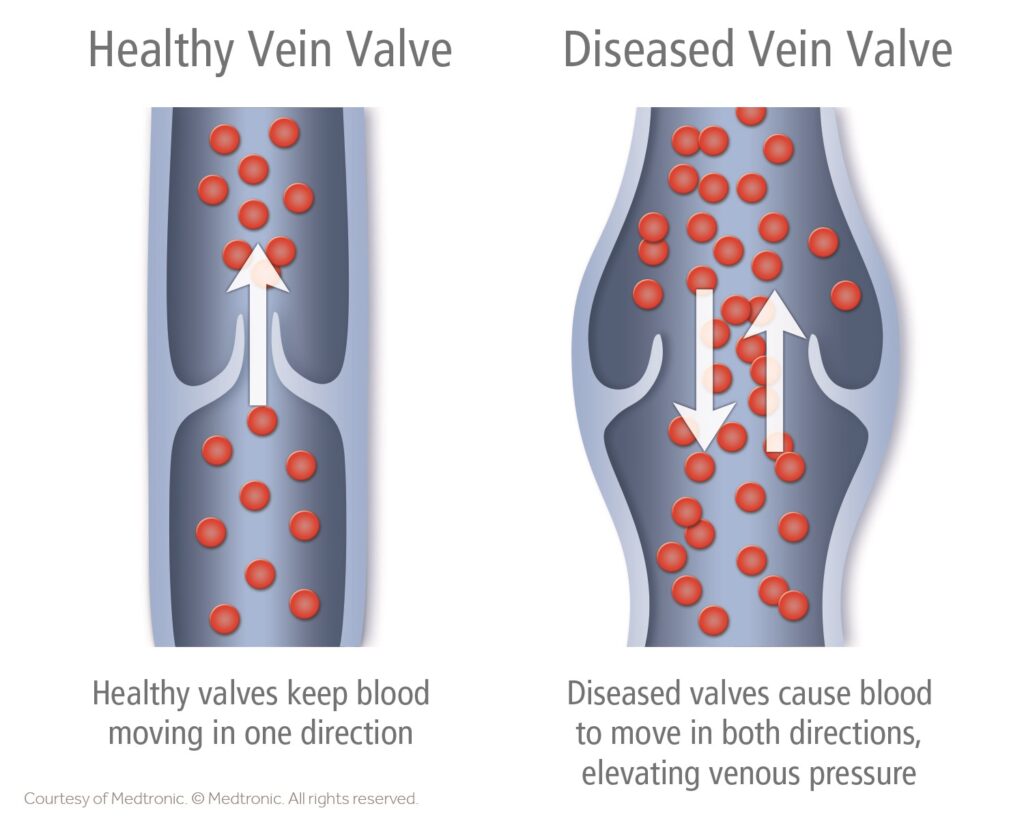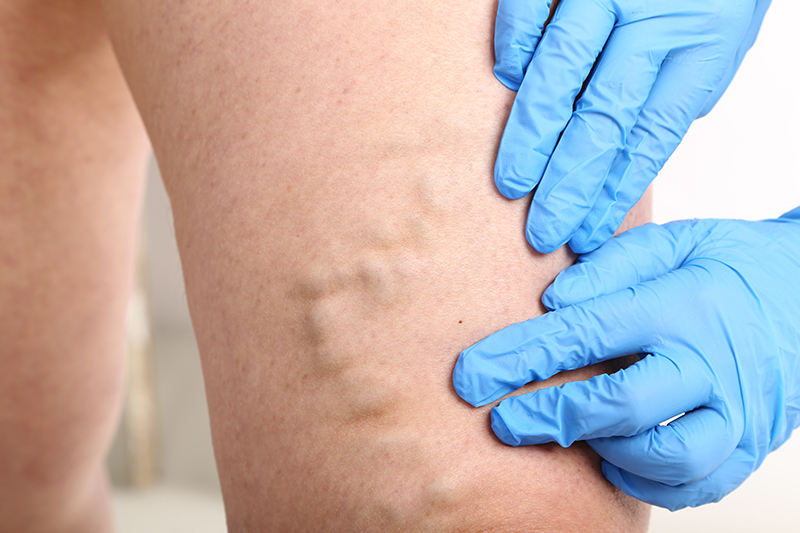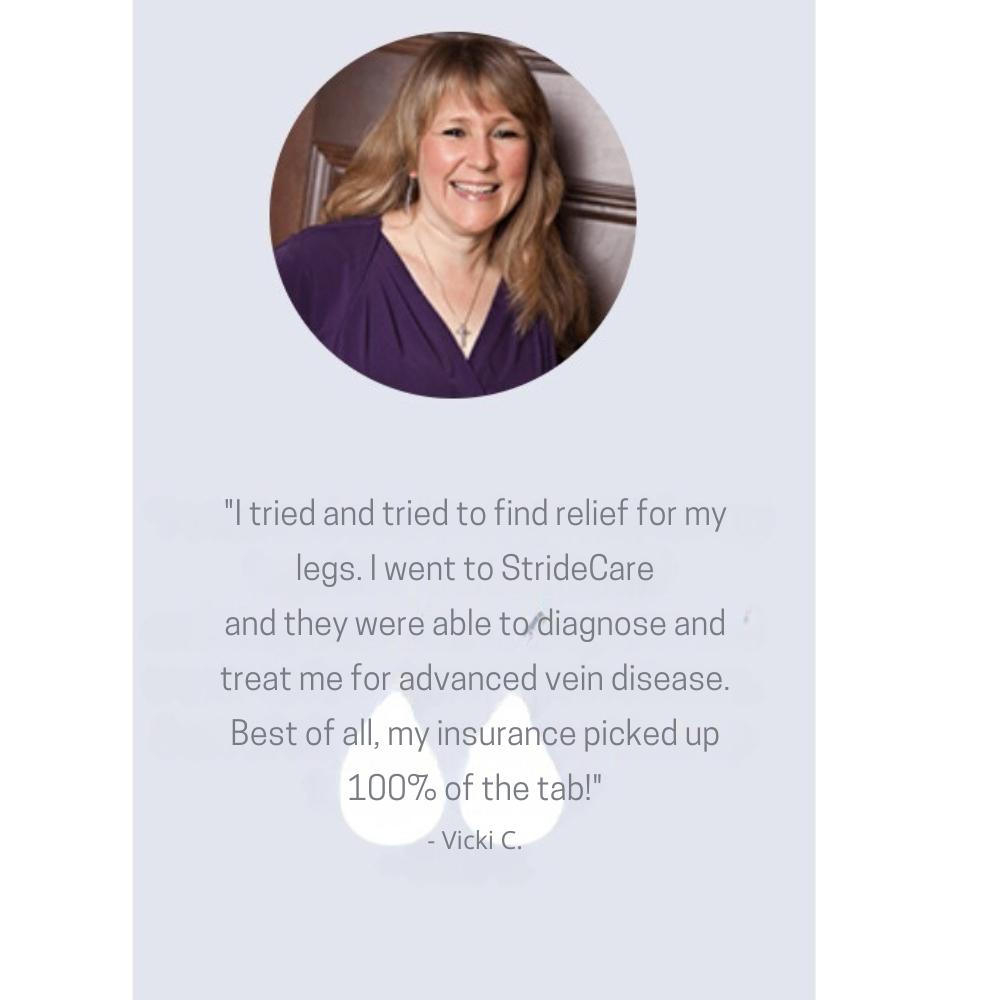South Texas Vein Doctors Solve Woman’s Chronic Vein Disease
Author: StrideCare Internal Team

Vicki’s Story: “Long-Time Vein Issues — No More!”
When you meet Vicki* you’ll notice her easy laugh, friendly smile—and that she’s happy to tell you about the vein treatments that changed her life! Vicki’s struggle with chronic vein disease is one we are familiar with here at StrideCare It started a long time ago when she was misdiagnosed and did not receive the proper treatments. All the signs were missed by other doctors.
Vicki agreed to share her chronic vein disease journey so others could learn from her experience.
What Is Chronic Vein Disease?
Firstly, what is chronic vein disease? According to the Society for Vascular Surgery, vein disease is a common condition that affects roughly 25 million men and women in the United States. This condition develops over months or years from malfunctioning valves in the veins of the legs. Normally functioning valves prevent the backflow of blood down the legs and keep the blood moving towards the heart. However, the leaky valves in a patient with chronic vein disease do not hold a seal. Blood pressure then builds up in the lower legs leading to pooling of the blood called venous stasis. This can result in swelling and skin changes, such as discoloration and hardening.

What Are Chronic Vein Disease Symptoms?
Common signs and symptoms include:
- Spider veins
- Varicose veins
- Leg cramps
- Aching pain
- Heaviness
- Tiredness
- Swelling
- Restless legs
- Skin discoloration
- Wounds or ulcers that take a long time to heal
Women are at higher risk especially after pregnancy. Other risk factors include family history of chronic vein disease, occupation that requires prolonged period of standing or sitting.
For many people, twisted, bulging varicose veins seen and felt under the skin and are more of a cosmetic concern. For others, varicose veins affect their quality of life and, if left untreated, can lead to chronic vein disease with more serious complications.

Q & A About Vicki’s Journey with Chronic Vein Disease
Q: Does chronic vein disease run in your family?
A: You bet it does! I remember my mother’s calves. They were more bulbous towards the knee and much thinner near the ankles. My dad had venous ulcers. I remember both being quite miserable.
Q: When did you notice you too were suffering with chronic vein disease?
A: For the longest time, I didn’t know I had vein chronic disease. I didn’t ever think that because my parents had problems with their legs that I would too. In the early 2000s, I had blood clots in my leg. I underwent lots of testing. My blood wasn’t thinning properly. I also injured my leg at that time.
Then, about three years ago, it looked like I had a tumor on my leg (where the injury had occurred). I went to see a dermatologist who diagnosed it as cellulitis. I was given potent antibiotics to treat it.
There was no change. So, the dermatologist changed the dosage and told me that if nothing happens, I’d have to see an infectious disease doctor and have a biopsy done.
Q: Did the increased dosage of antibiotics help?
A: No. But it was interesting when I went to see a podiatrist for a foot problem I was having and he looked at my leg and said, “You don’t have cellulitis. This is something else.” So, the mystery continued.
Then late last year I noticed a hardening on my right leg where I had hit it over 10 years earlier. It didn’t heal. It became very hard, very itchy. It oozed. My legs were achy, hurt and would swell. The skin became dry, flaky. I wanted to scratch and scratch.
I knew I needed to see a doctor but didn’t know which one. My best friend was having issues with her legs too. It just so happens that her sister-in-law was a receptionist at StrideCare. She told my friend and I to come in for a vein consultation. When you’ve tried and tried to find relief, it couldn’t hurt, right? So, I did.
Q: Were you diagnosed with vein disease?
A: Yes! Dr. Hamilton was able to diagnose my problem right on the spot. I had venous dermatitis and lipodermatosclerosis. Both are advanced forms of vein disease. Basically, chronic vein disease at its almost worst.
At my vein consultation, we discussed my family history. I learned that when one parent has chronic vein disease you have a 50% chance of developing it. When two have it, that chance shoots up to 90%. Add those odds to me being a woman (one in three women develop vein disease) and previous pregnancies—I was a walking target for developing chronic vein disease! Right then and there, I thought to myself, “This is going to stop with me. I don’t want my kids to get like this.”
We also discussed all the misdiagnoses. Dr. Hamilton said that if I had had a biopsy done, as suggested by the dermatologist, I would’ve really damaged my leg, opening it up for infection.
I left that first appointment so excited that finally this embarrassing, debilitating, 24/7 situation might be over soon!
Q: Did you have any pre-existing medical conditions you were worried might interfere with treatment?
A: I’ve been on Coumadin for nearly 13 years—since I had the blood clot issue—so I was concerned I’d have to go off of it before getting treated. Dr. Hamilton explained that because vein treatments are minimally invasive and done on an outpatient basis, I wouldn’t have to go off Coumadin at all. That was a huge relief. That and the fact that StrideCare treats people who are on Coumadin all the time.

Q: Which vein treatments did you require?
A: I ended up having four days of treatments. I had a radiofrequency ablation on my left greater saphenous on Monday, the smaller saphenous on the back of the left calf Tuesday, another ablation on the right calf on Wednesday and an ambulatory phlebectomy on my left leg Thursday. Luckily for me, my insurance picked up 100% of the tab!
We are waiting to see how my legs and skin react to the treatments. I may need to come in later for some sclerotherapy to take care of any remaining spider veins.
Q: Did you notice immediate improvement?
A: The most amazing thing was when I woke up on Wednesday morning, I noticed I didn’t feel dizzy when I stood up out of bed. The dizziness was something that had developed six months earlier. And now it was gone.
Q: What’s the most noticeable benefit so far since getting your veins treated?
A: I had my treatments in early May, and I noticed that the purple color in my left ankle dissipated quickly. The toughened skin in my left leg—the one that was most damaged—has begun to soften. I am so looking forward to wearing dresses and shorts again! But the best thing that’s happened so far is when my daughter called me and said, “Now we can climb mountains together, mom.” She knows how much I love to power walk—and now it doesn’t hurt, and I am getting faster and stronger every day. These treatments were an answer to a prayer.
Q: Any advice to share from your experience?
A: Just because you don’t have pain, doesn’t mean you don’t have an issue. And if your skin changes, come in for a vein consult. It won’t hurt anything. You might have chronic vein disease and you might not. But rule it out first. Don’t let your legs get to the point that mine did. My skin was damaged for so long, it is going to take a while to get it healthy again. But stopping the vein disease means it’s not going to get worse.
Also, I want everyone to know that if you are diagnosed with chronic vein disease, I can’t recommend the vein specialists, nurses, PAs, and admin at StrideCare enough. They are the most professional, caring, nicest group of folks. I can’t thank them enough for finally ending my vein pain and skin problems.
Meet Our Expert South Texas Vein Doctors at StrideCare
The vascular physicians at StrideCare are board certified diagnostic radiologists with additional fellowship training in vascular and interventional radiology. They are leading South Texas vein doctors for treating chronic vein disease, varicose veins and leg wounds that won’t heal due to vein problems.
StrideCare has long been a leader in performing leading-edge procedures to treat vein disease such as varicose veins, as well as spider vein treatment, chronic venous insufficiency (CVI), restless leg syndrome, chronic pelvic pain, pelvic congestion syndrome, May-Thurner Syndrome and more—all the while providing compassionate patient care. StrideCare physicians are board certified diagnostic radiologists with additional fellowship training in vascular and interventional radiology.
If you need vein treatment, or you have questions on how to avoid the onset of varicose veins and more invasive treatment options, the experts at StrideCare will recommend an individualized plan to help you get the best results.
Prior to starting any new treatment or questions regarding a medical condition, always seek the advice of your doctor or other qualified health provider. This information is not a substitute for professional medical advice.
StrideCare serves the South Texas area including Houston, San Antonio, Austin, Round Rock, Bastrop, Brushy Creek, Cedar Park, Converse, Georgetown, Hutto, Kyle, Leander, Marble Falls, New Braunfels, Pasadena, Pearland, Pflugerville, San Marcos, Schertz, Houston, Sugar Land, Katy, Webster, Bay City, Clear Lake, Lake Jackson, The Woodlands, Universal City, Spring, Kingwood, Stafford, Conroe, Texas City, Cypress, League City, Bellaire, and more.
*Patient stories are true. Names and/or photos may be changed to protect patient confidentiality.


